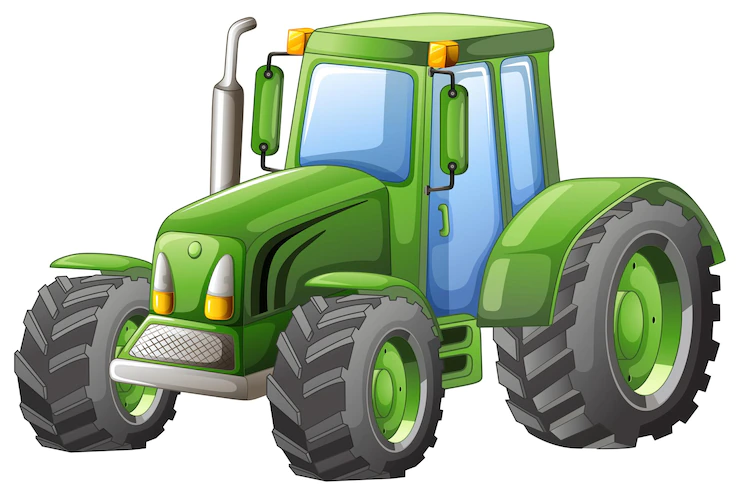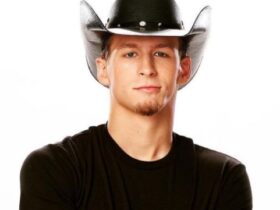To understand how a tractor functions, farmers must have knowledge about its various components. This knowledge is especially beneficial for new users, as it can help them diagnose and repair their tractors and fuel-efficient mini tractors whenever necessary. Having this knowledge can save both time and money related to tractor maintenance, which is essential considering that tractors are prevalent agricultural vehicles in India.
A tractor comprises different parts that perform distinct tasks to keep it running. Therefore, it is crucial to know enough about these parts before attempting any repairs. In this article, we will provide you with the best information about tractors, including the most crucial tractor parts and their functions. If you have recently purchased a tractor, this article is especially for you. Learn more about tractors to ensure you can operate and maintain them effectively.
Primary Components of Tractors
If you are looking forward to buying a tractor, you must know its main components. The following are the crucial parts of a tractor:
- Engine: The Internal Combustion Engine is an essential part of a tractor as it gives power for all its functions. The transmission parts transmit this power to the PTO and wheels of the tractor. It is not wrong to say that the engine is the heart of the machine. Fuel and oxidisers are combusted in the engine in a space known as the combustion chamber. It produces an initial power of 20-120 HP. Depending on the tractor size, they can use 4, 3 and 2-cylinder engines. Their design is such that they can easily tolerate extreme conditions. Thus, they can operate on hot sunny days or carry heavy loads and not burn out. If an engine is slightly damaged, the entire tractor could stop working. Thus, you need to be careful when working with multiple attachments, as severe damage can be caused if handled poorly.
- Clutch: The function of a clutch is to give the engine its first movement. Gears are changed using the clutch, equalising the gearbox and engine speed. In simple terms, the gearbox and engine are connected through the clutch. It has the primary role of connecting and disconnecting the engine from the transmission gears and wheels. The clutch discusses the engine from the transmission unit for easy cranking. When the engine is started, power is transmitted to the gearbox using the clutch. The engine power must be disconnected from the gearbox to change the gears. In the absence of the clutch, the gear teeth can get destroyed. A good clutch must be able to take a load with no chatter and drag.
- Gearbox: With the help of a gearbox, the input drive speed is changed to a higher or lower output speed. In addition, it works to reverse the direction of rotation. The goal is to move the engine movement from the clutch to the tractor’s wheels at the wanted speed and revolutions. The selective sliding gearbox has different parts like a countershaft, output shaft, input shaft, gear shifting lever and gear housing. These shafts have different gears mounted on them. The clutch is connected to the main shaft directly. The shifting is achieved by using the shifting fork and shifting lever. The gears shift with the shaft, where they come in contact with another gear for connecting the power train.
- PTO: Using PTO, rotating machines are provided with motion transmission. PTO includes different parts like a cover, shield and shaft. A tractor can be employed for various functions. For this reason, it comes with different attachments and implements. Thus, PTO operates other moving gear for threshing, spraying, rotavator and pumping water. Power take-off transfers engine power to implements. In addition, PTO horsepower is the available power for running different implements. This power source is stationary, which draws equipment for planting crops and tillage. The PTO shaft gets power from the gearbox. Modern PTO is an advanced tool to transfer power from one piece of equipment to another.
- Brakes: The brake system is also a crucial part of tractors. It is essential from the safety point of view of the operator. Several accidents and mishaps happen on tractors due to malfunctioning brakes. The brake system works to stop or decelerate a moving tractor. It primarily operates on the tenet of friction. If a moving part touches a stationary part, there is an impact on the motion of the moving part. The frictional force is the power behind this, which is applied opposite to the moving direction. Heat energy is generated through kinetic energy. Brakes come in two types: hydraulic and mechanical.
- Steering Wheel: The steering wheel is used for steering the tractor. It can be done automatically using the power steering system or manually via the wheels. There must be robustness in the steering wheel to support the weight of an entire tractor. A colossal load must not damage it. In addition, it handles the direction of the movement of the tractor. The steering wheel also offers directional stability.
- Differential Unit: Gears are arranged specially to allow one rear wheel to move faster or slower when compared to the other one. When you turn the vehicle on a curved path, the outer wheel travels more distance than the inner one. For this reason, the outer wheel needs more power. The differential unit achieves this function for the tractor, allowing one rear wheel to rotate more quickly than the other. This unit is made up of different parts like a bevel gear, differential pinion, differential casing, half shaft and crown wheel. It is critical to move over extreme terrains like rough or muddy surfaces.
- Hydraulic control: A hydraulics system is put on the tractor to operate a 3-point linkage system. It helps in raising, controlling and holding the implements for effective agricultural activities. The system is made of components like lifting arms, hose pipe, safety valve, control valve, hydraulic tank, hydraulic cylinder, piston and hydraulic pump. The oil reservoir supplies oil to the control valve at high pressure. Then, the hydraulic cylinder receives the oil to move the piston. This movement results in moving the lifting arms. In addition, suitable gears are employed to operate the hydraulic pump.
















Leave a Reply